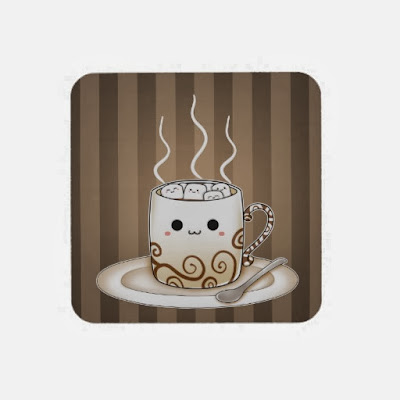IT'S ALL ABOUT COCOA!!
HyYYe guys and Assalamualaikum!!!
We meet again in our blog.. so now we want to talk about cocoa. In food and beverage class, we have to learn about drinks/water and it has a relation with cocoa. Cocoa is one type of drinks, we will give information about cocoa that we have find it.
ABOUT COCOA TREE
The cacoa tree (Theobroma Cacoa) is grown in the tropics in a band between 10 to 20 degrees north and south of the equator, sometimes called the "Cocoa Belt". The tree is often grown in the shades of other trees. It can be as tall as 40 feet (12 meters), and has fruits (pods) which are more than on foot (30 cm) long. The fruits may be brownish-yellow to purple, and contain 20-40 seeds or cacao beans in a pink, sweet-sour pulp.
Four major types of cacao are cultivated: Criollo, Forastero, Trinitario and National. The Criollo tree originates in Mexico and Central America and gives very high quality cacao beans and is mainly cultivated in South and Central America. The yield is fairly low. A number of varieties of Criollo are cultivated; in Venezuela well-known varieties are "Chuao", "Porcelana", "Puerto Cabello" and "Carupano". Criollo beans are often mixed with other varieties of cacao when making chocolate.
The flavor of the cacao beans is not only dependent on the variety, but also on the soil, temperature, sunshine and rainfall. It is now possible to buy chocolates made with cacao beans from one single region and thus compare the aromas; these chocolates are often called specialty chocolates, in contrast to ordinary chocolate which are made with mostly cheap cacao beans from several regions and with more than one cacao variety.
High quality cocoa powder must be easily dissolved and have good flavor. The beans used for the manufacture of cocoa are selected especially for this purpose.
After roasting and winnowing (removing the outer shell from the cacao beans) they are ground making cocoa liquor. The heat which is generated melts the cocoa fat thus generating a liquor, and sometimes additional heating is employed. The liquor hardens to unsweetened chocolate when it cools below 95 degrees F / 35 degrees Celcius.
THE MANUFACTURING OF COCOA
High quality cocoa powder must be easily dissolved and have good flavor. The beans used for the manufacture of cocoa are selected especially for this purpose.
After roasting and winnowing (removing the outer shell from the cacao beans) they are ground making cocoa liquor. The heat which is generated melts the cocoa fat thus generating a liquor, and sometimes additional heating is employed. The liquor hardens to unsweetened chocolate when it cools below 95 degrees F / 35 degrees Celcius.
This gives a darker color and a stronger flavor. American recipes are usually made for natural cocoa powder, which has a higher acidity. Therefore baking soda may be used in recipes with natural cocoa. Baking soda should not be used with Dutched cocoa unless an acid ingredient is added, e.g. orange juice or sour cream. Cocoa used for cooking is normally unsweetened.


.jpg)



.jpg)
.jpg)

No comments:
Post a Comment